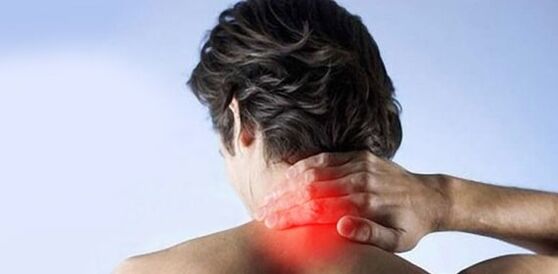
The defeat of the degenerative-dystrophic intervertebral disc, which occurs in the cervical spine due to metabolic disorders, is called cervical osteochondrosis. The processes of these changes are irreversible and can cause very serious health problems over time.
Cervical spine osteochondrosis is rapidly rejuvenating, and today the disease often manifests itself even in very young patients. And there is nothing to say about mature age - almost everyone has such problems with the neck. Surely many are familiar with the concept of "nerve stings" when it is impossible to turn your head? And this is one of the most unpleasant manifestations of this insidious disease, which is increasingly reminiscent of itself without qualified treatment.
All types of osteochondrosis have serious complications, so do not delay treatment.
Causes of cervical osteochondrosis
We distinguish the following causes of osteochondrosis of the spine, which, accumulating sooner or later, lead to certain changes in the bone and cartilage of the upper vertebrae:
- The scourge of our time is the sedentary lifestyle and especially the static situation during the day, including the computer. The vertebrae do not receive enough food and blood supply, so undesirable structural changes occur.
- Age-related changes in cartilage tissue. This is inevitable in almost every person over the age of fifty, and sometimes even earlier.
- Lifelong spinal injuries. This is the reason why professional athletes often suffer from neck pain.
- Overweight - the extra pounds increase the load on the spine as a whole, which also causes neck suffering.
- Improper metabolism caused by bad habits and poor nutrition in the body also contributes to the development of spinal pathology.
Symptoms of cervical osteochondrosis
The following symptoms of cervical osteochondrosis indicate problems with the way the body works:
- She is worried about frequent headaches accompanied by dizziness, flies and darkening of the eyes, and general weakness.
- Turning the head to the side is limited and painful.
- There are pains in the neck, shoulder blades and chest, as well as in the arms.
- You are characterized by unexplained and frequent pressure drops.
- There is numbness in the fingers or hands and limited movement of the tongue.
- Tinnitus and other hearing problems are present.
- She feels insecure while walking, staggering.
Methods for treating osteochondrosis of the cervical spine
Of course, such an important task as treating cervical spine osteochondrosis has long been attempted by physicians around the world and not unsuccessfully. Currently, the disease is well studied and can be well controlled with the right approach, allowing the patient to live a full life without limitations and pain. Doctors use the following methods to alleviate and eliminate the onset of osteochondrosis:
- Acupressure. The oldest techniques in Chinese and Tibetan medicine will feel much better.
- Moxotherapy, tszyu therapy, hirudotherapy. After such unusual procedures, osteochondrosis recedes for a long time.
- Acupuncture (reflexology). One of the most effective techniques, the essence of which is to insert the thinnest needles at certain points in the patient's body at different depths. They create a strong reflex reaction that has a beneficial effect on the cervical spine.
- Traction techniques. These are based on the action of two forces acting in opposite directions on the human body and reduce the pressure in the intervertebral plates accordingly.
- Phytotherapy and physiotherapy exercises. Good physical practices, selected by an experienced professional, are the key to success.
- PRP therapy is the latest way to stimulate regenerative processes. It is used to restore the functions of various organs after illness and injury, including restoring the function of the musculoskeletal system.


























